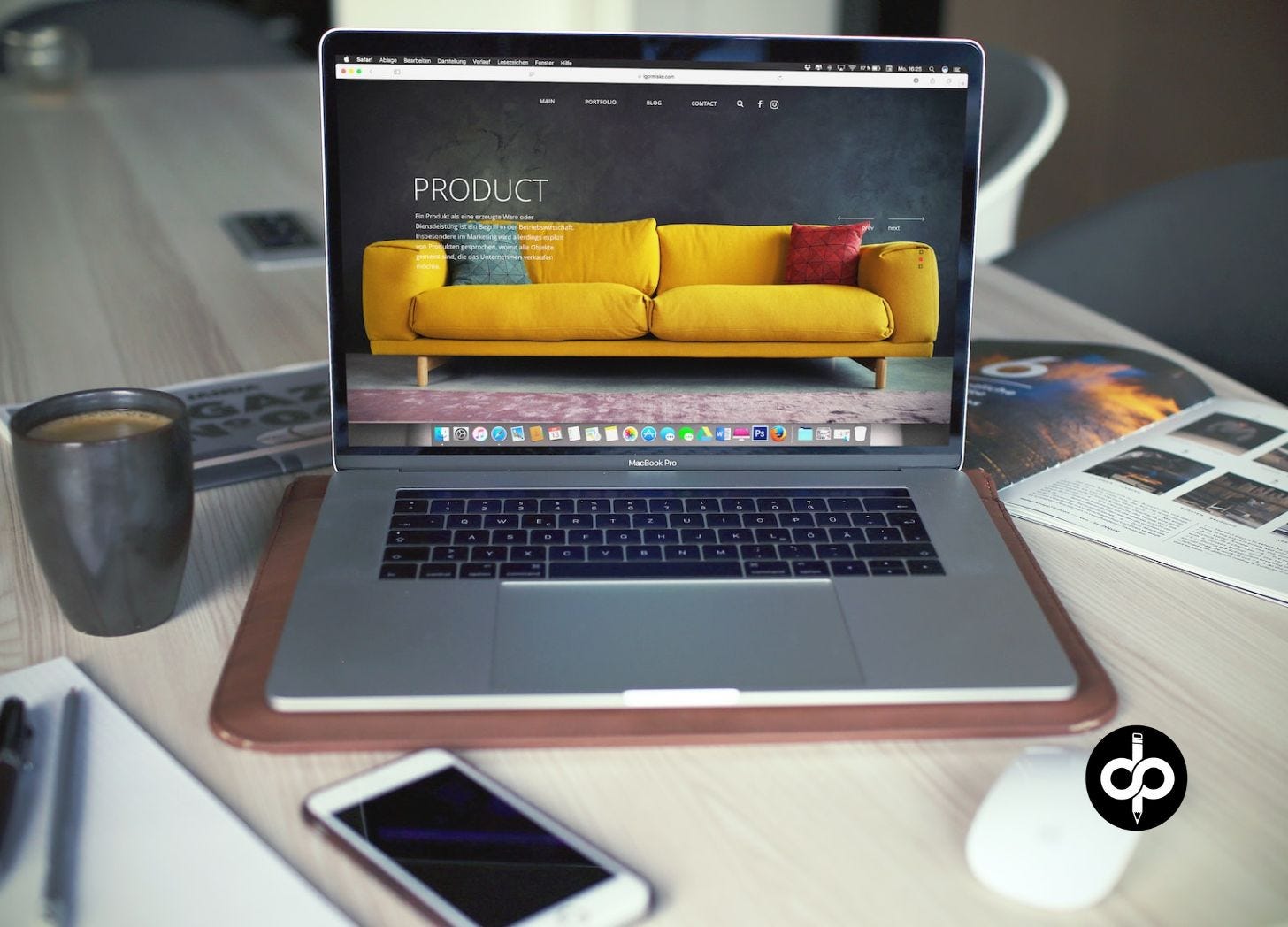Welcome to this new issue of Think. Write. Lead. Last week we talked about the show-me-the-money mindset and why you should monetize your content from the start. But to be able to monetize your content and sell your products, you must have a website or landing page that actually converts.
Some websites are like mazes, where you can take different paths and get lost in a myriad of information.
Others are like a one-way street, where you’ll inevitably get to a unique destination.
A website optimized for conversions is a one-way street.
A well-designed landing page has only one purpose: to turn visitors into leads (by getting their contact info) or customers (by convincing them to buy).
In other words, your landing page should only have one action step:
to sign up for a course
subscribe to your newsletter
or schedule a call
And it must be very obvious, without distractions or other buttons that may pull visitors away to other pages.
Uber has a big form high up on the page with a clear call to action: Sign up now.
How do you accomplish that?
Start with a headline that gets people excited, while making sure it’s 100% clear what the service is.
“Drive with Uber” (it tells you right away what they are offering)
“Make money on your schedule” (this gets you excited)
Your product or service surely has many benefits that will improve the life of your client in many ways. Your landing page must communicate those benefits clearly and in an appealing way.
The headline goes straight to the pain point of the visitor and promises to solve his or her problem. Then it features three benefits the person will obtain when signing up.
Notice the three benefits Uber highlights: revenue, convenience, and safety.
Here’s another good example.
You know right away what they are offering: on-demand courses and live coaching. Then it makes a promise (grow your business) and tells you who it is for (small business owners).
Which is great, because sometimes you just see clever little headlines that make you scratch your head (WTF are they selling?). Like this one:
☝️ Too busy. No CTA above the fold. What’s the offer? Coaching, mentoring and marketing? Looks like a fashion design website.
How’s your site’s messaging? Do you know what buttons to push (drivers) to move your readers into action?
There are 4 drivers that will make people want to buy from you. They are:
Logic: "Grow your business."
Emotion: "Reduce stress."
FOMO: "Your competitors are already doing it."
Opportunity: "Be recognized as the go-to expert in your field."
You should address all of these drivers in your messaging.
If you can show your prospects how your product ticks all those boxes, they'll be more likely to buy.
THINK.
Do you understand deeply what your audience really cares about, their drivers?
Is your homepage about you or about the outcomes for your clients?
Are you just listing features or laying out benefits?
WRITE.
In preparation to write the copy for your homepage, do the following:
Write a paragraph explaining the problem and the consequences for your readers.
Tell a story with the before (the current situation of your buyer), the journey (the insights and challenges the buyer must go through), and the after (reaching the goal, solving the problem, after using your product).
Write three versions of the headline and subheadline and test them with your audience.
LEAD.
Most websites suck or are too complex.
So, lead the charge with clear copy that speaks directly to your readers, using the right balance between emotion and logic.
It’s not easy. But do your research and test your copy with your audience.
Then, results will speak for themselves.
Bonus content for paid subscribers:
How to price your offerings using 3 powerful psychological tactics
A checklist for testing your website’s messaging
A great video (not mine) that goes in depth into this topic and critiques website copy with great insights.
Keep reading with a 7-day free trial
Subscribe to Thinking About AI to keep reading this post and get 7 days of free access to the full post archives.







